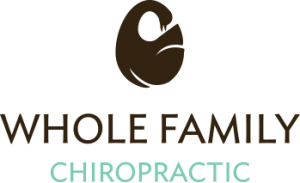Beyond the ADHD Label: How We Look Beneath the Surface to Help Kids Thrive
As a parent, nothing is more exhausting than watching your child struggle — especially when you’ve tried everything the “traditional” route has to offer.
Maybe you’ve been through the drill: a quick diagnosis, a prescription for medication, and if that didn’t help, a higher dose or a different brand. You’ve probably left those appointments feeling frustrated… because no one was really talking about anything beyond the pill bottle.
If you’ve found yourself wondering, Is there something more we could be doing for my child’s long-term success? — you’re not alone. That’s exactly what we specialize in.
The Problem with a One-Size-Fits-All Approach
In the U.S., over 7 million children have been diagnosed with ADHD. But here’s the thing — testing and treatment methods haven’t evolved much in the last 20 years.
They still focus on labeling:
-
Inattentive ADHD
-
Hyperactive ADHD
-
Or a “combined type”
What’s missing?
No one is asking why. What’s happening beneath the surface that’s driving these behaviors?
What We Do Differently
Instead of relying solely on neuropsychological tests or symptom checklists, our office takes a deeper look — at your child’s nervous system.
We use gentle, non-invasive scans to see how your child’s body is communicating with their brain. These scans often reveal two common patterns:
-
The “Raging Bull” — a nervous system stuck in overdrive, fueling hyperactivity.
-
The “Drunken Bull” — a disorganized system, often linked to inattentiveness and difficulty staying on task.
James’ Story
James came to us in 5th grade — a classic “Raging Bull.” His energy was through the roof. He’d get multiple “fix-it tickets” from his teacher every week because once he got revved up, it was nearly impossible to slow down.
His parents didn’t want to rely on medication. They wanted a different path.
After starting neurologically focused chiropractic care, something remarkable happened: James went an entire month without a single ticket.
We weren’t “treating ADHD.” We were helping James’ nervous system regulate itself — activating his “brake pedal” so he could stay calm and focused, even when things got exciting.
Why the Body Matters as Much as the Brain
Most ADHD conversations focus on the brain — especially the prefrontal cortex (which controls focus, attention, and self-regulation) and the limbic system (which regulates emotions and behavior).
But here’s what’s often overlooked: these areas are constantly receiving information from the cerebellum — the part of the brain that integrates movement and sensory input.
If the body is sending stress signals to the cerebellum, that stress is passed along to the rest of the brain… and suddenly your child is in fight-or-flight mode all the time.
By identifying and reducing that stress at the source, we can help shift the whole system toward calm and focus.
The Hidden Strengths Inside Every “ADHD Brain”
One of my favorite parts of this work is reframing the ADHD label. Yes, there are challenges — school struggles, self-esteem dips, meltdowns over homework. But there are also incredible strengths.
We’ve seen:
-
Hyperactive kids who process the world faster than their peers — once they learn to focus, they excel.
-
Inattentive kids who are wildly creative and see beauty and possibility others miss.
When we help the nervous system function better, kids can harness their unique brain wiring as a superpower, not a setback.
Where We Go From Here
Whether your child is more “Raging Bull,” “Drunken Bull,” or a mix of both, the first step is understanding what’s driving their behaviors. That’s why our neurological scans are so powerful — they give us a clear picture of what’s happening inside the body, not just the brain.
From there, we can create a personalized plan to help your child feel calmer, more organized, and more confident — without relying solely on medication.
If you’re ready to see what’s possible, reach out. We’d love to help your child discover just how powerful their brain — and their future — can be.

